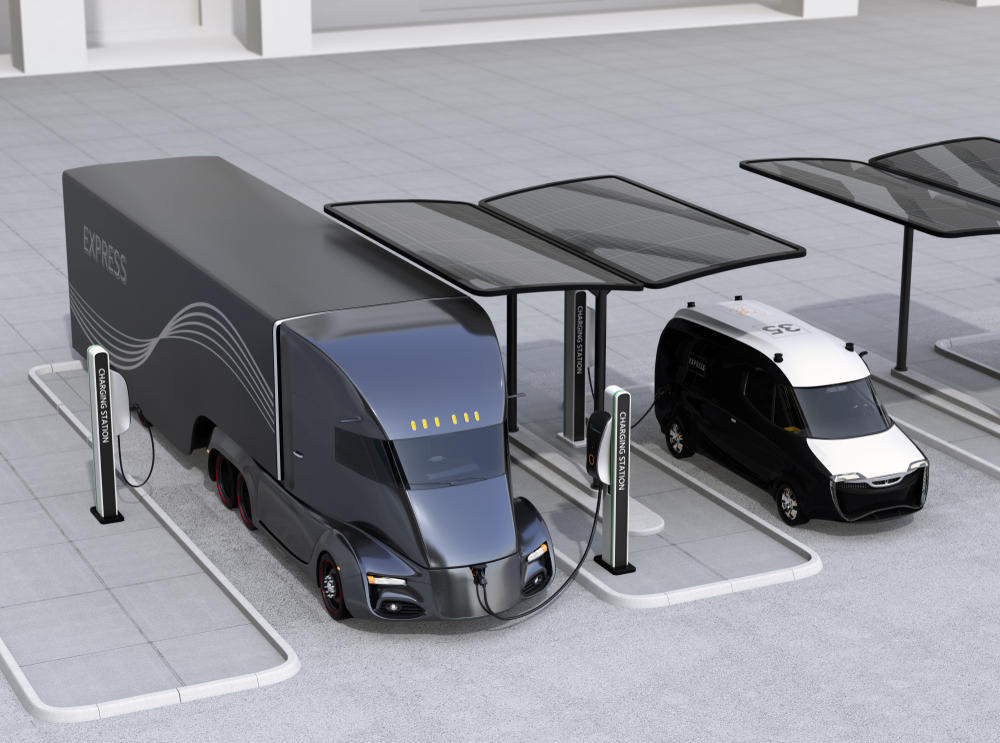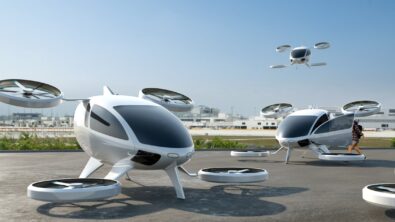Last mile delivery paves for way electrified, autonomous vehicles

The final leg of product transport to urban consumers has become such a complex challenge that it has its own name: the last mile of delivery. Technically, it could be more or less than a mile, but last mile delivery, or final mile delivery, refers to the delivery of goods from a transportation hub to their final destination: a city-dwelling buyer, whether an individual or a business.
Since the explosion of e-commerce, last mile has become incredibly strategic for any business selling goods online or delivering those goods. At the same time, advanced technologies such as autonomous driving and vehicle electrification are making it possible to drastically reduce shipping costs in the last mile of delivery, which is significant considering labor is 39 percent of shipping costs, and fuel is 25 percent, according to the American Transportation Research Institute.
In the near future, final mile delivery will look a lot different because of these trends and challenges. In large urban centers across the globe, we’re going to start seeing things like smart lockers, where people enter a texted code to access their deliveries; and electrified trucks, cars, scooters and bicycles that make deliveries all day and then charge overnight.
Some of these conveyance vehicles will run autonomously, powered by real-time data sent over the Internet of Things. The data will not only tell the vehicles where to go, but the most efficient routes based on analysis of real-time conditions.
Although these are disruptive trends, traditional transportation and logistics companies can adapt, and many are working to do so. For these companies and product shippers, there’s enormous potential to reduce delivery costs and configure unique delivery services for local requirements and challenges, as well as customer preferences.
For manufacturers of vehicles and electrification equipment, the opportunity is to become part of a growing ecosystem of intelligent, electric and autonomous service delivery in growing “smart cities.”
Making deliveries in congested cities
Two demographic trends are making the last mile of delivery a hotspot of innovation and opportunity. First, the percentage of the global population living in urban areas is expected to grow from 55 percent today to 68 percent by 2050. Second, global retail e-commerce is predicted to double from 2017’s volume by 2021.
Delivery routes have anywhere between 50 to hundreds of stops a day. The impact of these combined growth trends could take a big toll on public infrastructure and affect air quality, quality of life and even safety in cities. London, Delhi, Zurich and other large cities are imposing new or more restrictive regulations on emissions, parking and even cars themselves to fight pollution and traffic congestion.
This is one of the things shining a light on final mile delivery and spurring companies such as UPS and Amazon to experiment with new solutions. These include alternative-fuel trucks, people-powered bicycles and scooters, and an Uber-like app service. While these are good additions to last mile options, the real-game changer is going to be autonomous, electrified and connected vehicles. Siemens is working on an energy framework to make it happen.

Autonomous, electrified and connected vehicles
Vehicles with these properties have the biggest impact for change, whether they are fully electrified or use hybrid engines. They eliminate emissions, are powered at about a third the cost of diesel fuel, reduce hands-on labor costs drastically and—most significantly—optimize the power of data.
Connectivity goes beyond traditional telematics, where vehicles communicate with a data center. Vehicle-to-vehicle and vehicle-to-city analytics can automatically inform routing decisions, such as whether the remaining range of the vehicle is enough to cover a route. Having precise information such as this in real time provides a big advantage for customer service because potential problems can be predicted and addressed. Analytics also provide the potential to improve fleet utilization and overall program efficiency.
Another advantage is that these types of vehicles can take advantage of “smart cities” infrastructure that is becoming more commonplace. Researchers IDC predict that spending on smart city initiatives will grow to $158 billion globally by 2022, up from $81 billion in 2018.
For industry, the opportunity lies in designing, producing and serving the electrification infrastructure: electric and electric-hybrid vehicles, charging stations, grid energy storage and other needs.
The challenges for the vehicles themselves are going to be the same as the ones manufacturers have encountered for autonomous cars, although these vehicles won’t necessarily look like cars. One discussed idea, for example, is autonomous traveling lockers that the recipient opens with a pre-determined code.
Last mile delivery innovation will continue
Immense pressure on logistics service providers and online sellers to find more effective, sustainable delivery models for urban areas ensures that investment in new ideas will fuel innovation in the last mile of delivery.
Lots of new products will be part of this future, but electric, autonomous and connected vehicles will be a significant component. They are a good fit for the vision of cleaner, less congested cities that many urban areas have developed, and their potential to reduce shipping costs is unmatched. Fortunately, this disruptive trend has room for both new startups and traditional players—as long as they keep up with innovation.
This concludes our post on last mile delivery. For more information about what’s happening with the future of electric vehicles, please visit our electric vehicles Thought Leadership hub.
About the author
Puneet Sinha is the automotive manager in the Mechanical Analysis division of Mentor, a Siemens business. In this role, Puneet is responsible for his division’s business strategy and market development for vehicle autonomy and electrification thrusts. Puneet has more than a decade of experience working on various aspects of vehicle electrification. Prior to joining Mentor, he worked at General Motors, where he led global research and development teams to solve issues with fuel cells and battery electric vehicles. He also worked at Saft, a Li-ion battery manufacturer. Puneet has a Ph.D. in mechanical engineering from Pennsylvania State University, has authored more than 20 highly-cited journal articles and has been awarded seven patents on fuel cell and battery system design and operational strategies.



Comments